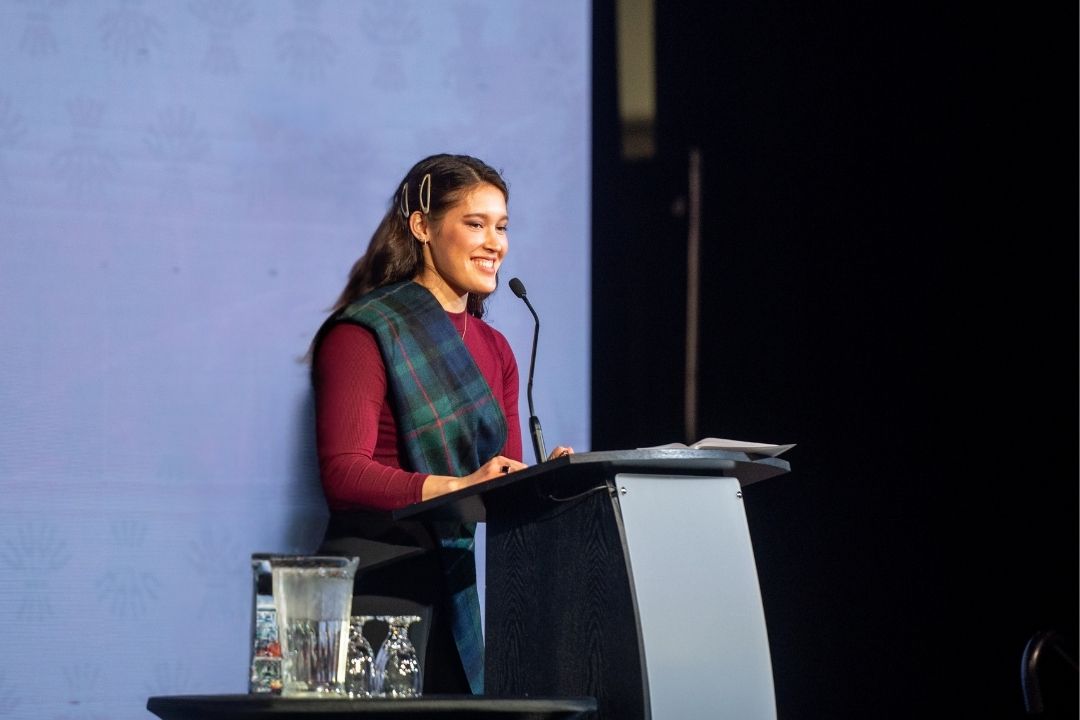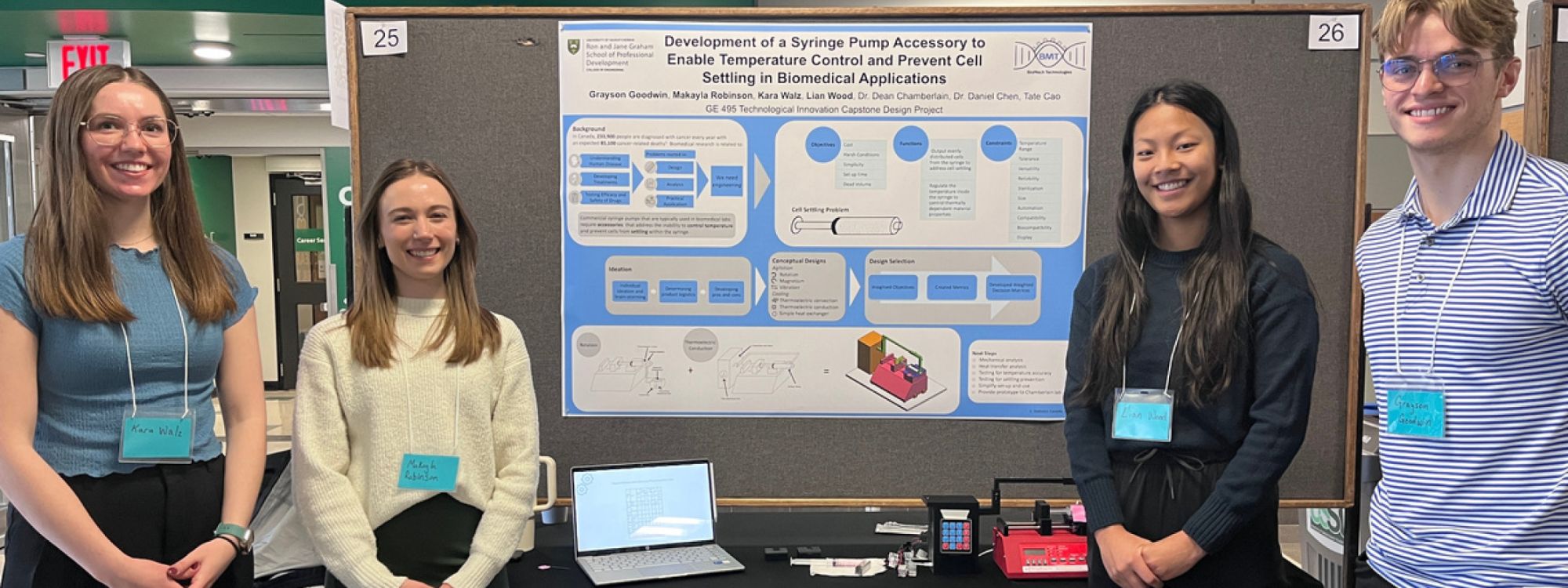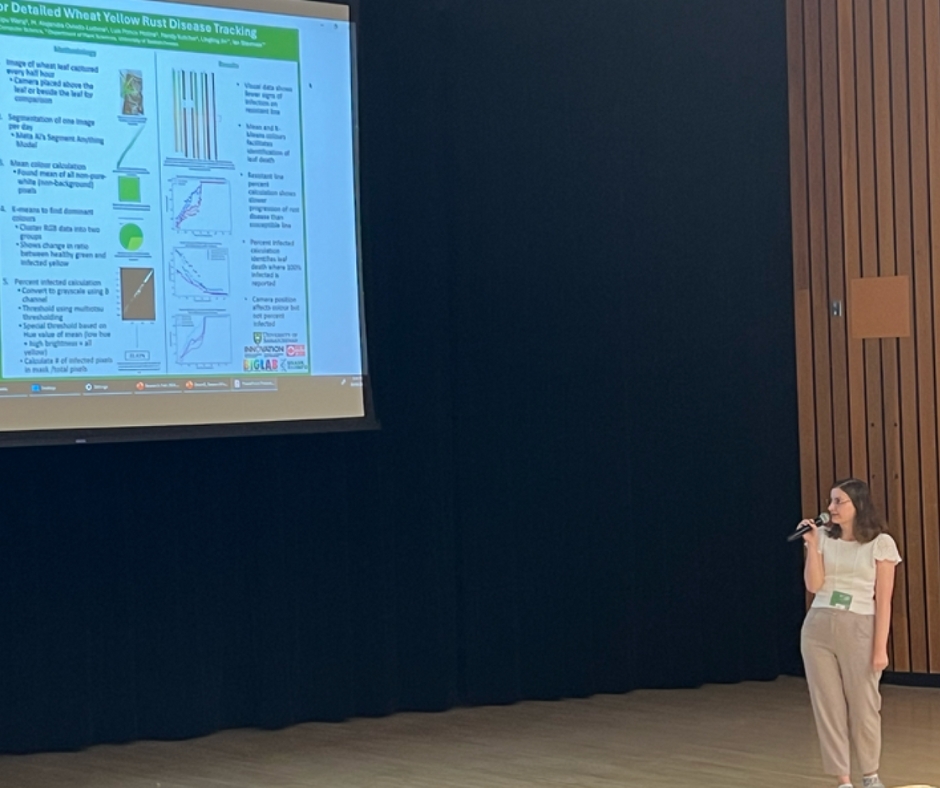
Who Runs the World?
Highlighting scientific research and work done by female USask undergraduate students.
By Francisca Lopez Molina via The Sheaf
Note from the author: Getting closer to graduating with my Bachelor of Science and the prospect of starting graduate school reinforced my love and passion for my field, biochemistry. I see myself and my female STEM-major friends presenting their Honours projects and Capstones, getting awards and fellowships to do summer research, and excelling in lab classes, and I’m overwhelmed with gratitude that this is the STEM world I get to experience. Women in the past have not been so lucky.
I originally intended to write this article for International Day of Women and Girls in Science, highlighting work done by female aspiring scientists at USask. But since the topic will forever be relevant in my mind, uncoupling it from that day felt like the right choice.
The brief stories that follow tell the tale of five extremely talented, dedicated women I got the absolute pleasure of interviewing. With most of them in their last year of their undergraduate degree, I wanted to highlight their hard work in their fields, the breadth of research done at USask and the opportunities that we can get if we’re looking out for them.
Makayla Robinson

Makayla Robinson is a mechanical engineering major in her fifth and final year. She currently serves as the President of the Mechanical Engineering Students’ Association, but has also been involved in the USask Space Design Team and, of particular interest to the author of this article, undergraduate research that bridges a gap between engineering and biomedical sciences.
Robinson actually went into engineering with the ultimate goal of applying to medicine. A guidance counselor who worked with Robinson in her high school math classes suggested an engineering degree. “I [thought] ‘I'll apply, and I'll maybe do a year, and if I like it, I'll stick with it, but if I don't, then I can just switch to something else,’” Robinson reflected. “I ended up really enjoying it, so I just stayed!”
Robinson has participated in research projects spanning from bovine claws and children with type I diabetes to Nordic walking, the physics of curling, cancer and syringe engineering. As part of the USask Space Design Team, she got hands-on experience working with the systems team. “I always advocate for student groups. I think it's a really good way to get hands-on experience in engineering in a project that hopefully you actually care about as well,” she said.
Robinson has worked in Dr. Dean Chamberlain’s laboratory in the USask College of Medicine to complete summer research and her Capstone project, a culminating project that showcases engineering students’ knowledge and skills learnt by the end of their degree. For her summer research project, Robinson worked on automating processes in Dr. Chamberlain’s laboratory.
For her Capstone, she’s working on an apparatus to control the temperature of and prevent cells from settling inside a syringe.
“I found it really intimidating in the beginning — we’re pretty outnumbered in engineering,” said Robinson. “In my second year, when I was officially in mechanical engineering, there were 90 students in my program, and there were around ten girls.”
Robinson said she’s very grateful for the community of women in engineering, and the support they provide for each other throughout their degrees. She says, “The representation isn't always there for you, but it's definitely growing and changing, and they're really working towards being more inclusive and just [advocating] for women to pursue engineering and to fight against those barriers.” After her graduation this spring, Robinson will be joining a biomedical engineering company full-time. She has been working with them since last summer part-time after meeting them at a conference.
Kara Walz
Kara Walz, also a fifth-year mechanical engineering student completing he Capstone project alongside Robinson, was first interested in engineering because “It was always pitched to me as the bridge between science and applying it, and I really liked that idea,” she said.
Last summer, Walz also worked in Dr. Chamberlain’s cancer research laboratory. “I really liked the work, and I liked the project and what it was working towards. I got to go to England! Even though it's a cancer research lab, I was working on a mechanical engineering problem that could be solved, that could make the researchers' lives and jobs easier,” said Walz.
Throughout her time in the Chamberlain Lab, Walz has been working on projects using mechanical engineering solutions to work around cancer research problems. “From an engineering perspective, the project that I was working on would help accelerate the types of experiments that the lab is working on,” she said. This includes, for example, production and optimization of microtissue models from patient tumor cells and derivatives. “I’m 3D printing stuff, using CAD software, designing it, and then working out the kinks with that, and using different pumps and things. Very mechanical engineering, but for the specific cancer research problem, to help accelerate and improve the quantity and quality of the experiments that they can do.”
Walz has also dabbled in Magnetic Resonance Imaging (MRI) research, working on a project studying changes in calf muscle mass as a result of space flight, simulated with bed rest, and the effects of an exercise regimen. She explained that this research could also extend to other situations, such as the elderly or patients who have recently undergone surgery and require extended periods of bed rest.
“I got to learn a lot of really key research skills, even through that of doing all the analysis, and then writing literature reviews and getting it to the point of presenting it at conferences,” she said.
“I think it's really inspirational and motivating to see yourself in research. I think that that's a big conversation about how little women have been represented in research in the past,” said Walz, citing biomechanics research as an example. “A lot of the data that's been collected has been [from] a typical white male, so in order to improve that and the reach of applicability [and] accessibility is by having female researchers in the labs, guiding in those decisions.”
“Engineers shape the world around us, so knowing my peers, the women in my classes, knowing the spaces that they're going to be in and be advocating for (...) I think it is so important,” said Walz. She also emphasized the importance of group work in engineering, explaining that having a collaborative, welcoming space is key.
Walz will be starting a Master’s degree in Toronto this year and hopes to work in biomedical engineering, considering both academia and industry for her future career.
Jill Trann
Jill Trann is a fourth-year student in Biochemistry, Microbiology and Immunology, a degree she first started to fulfill the prerequisites and start pharmacy school. “I have always loved science. (...) While I was getting my prerequisites, I came across the [Biochemistry, Microbiology and Immunology] degree and decided to finish it instead of just doing the prerequisites—and now I’m on a totally different path from pharmacy school!” said Trann. She also serves as the secretary for the Biochemistry, Microbiology and Immunology Students’ Association.
During the summer of 2024, Trann got the opportunity to work on a research project at the Vaccine and Infectious Disease Organization in Dr. Yan Zhou’s laboratory, which she turned into an Honours project.
Early last year, avian influenza (Influenza A, H5N1) was detected in cattle, which Trann explains was of great concern to scientists in the field. When cattle get infected with the virus, milk production decreases, affecting the operations of dairyfarms. Since the virus can be shed in themilk, it can infect other farm animals suchas chickens. The virus spreading to cows, which are mammals, is concerning for avian influenza, explained Trann. The CDC has already identified at least 70cases of H5N1 infections in humans in the United States, including one death. While the public health risk is still low, it is increasingly concerning.
For her Honours project, Trann is taking on a part of a larger cow trial, aiming to characterize the immune response to anH5N1 infection by measuring expression of different genes in mammary tissue and lymph node tissue. “Identifying the immune response will hopefully help with the mechanism of how the infection is spreading. [Scientists] are not totally sure how it’s going from the respiratory tract to the udders. Hopefully, if there’s an immune response by certain cells, they could be targeted for vaccines, and we can get in front of it; create a vaccine before it’s a big pandemic.”
“It's really exciting that I've had such support within my family and at university to do research and to pursue whatever career that I want to pursue in science, and I think it probably started with my family,” said Trann. “My parents really wanted me to pursue whatever I wanted to, and they allowed me to explore science. I've met a lot of good peers, and I haven't felt like my major is heavily male-dominated, which probably helps.”
Amanda Ewen

Amanda Ewen is currently a fourth-year student in Applied Computing with a Bioinformatics concentration and the president of the Computer Science Students’ Association. Bioinformatics is a much-dreaded class in some science majors, but for Ewen, it represents a perfect blend of her interest in computer science and biology. Ewen took an interestin computer science in a grade 11 class, where she was one of only three women.
Her project, in collaboration with plant scientists, focuses on creating a novel system that uses cameras to map plants and track disease progression, mostly in wheat. Ewen explained that the team first built an iPhone app that would allow the phone to automatically capture images using time lapses. The images would then be sent to a server where Ewen’s team could download and analyze them. However, she explained that they’re currently working on improving this automation: “We're working on getting that to be even more automated, where the analysis will happen online, and plant science researchers get the results of the analysis,” she said.
“For me, having people to look up to has always been really important, whether that be friends or professors,” said Ewen.“[I’m] trying to put on programming that encourages other girls to [get] involved in science. “That very first computer science class in high school, we were the only girls there, so [I’m] trying to get more people involved in seeing this as something they can do.”
“Growing up, I was super interested in math and science, but I really did consider it to be like a thing that boys do. My brother is an engineer, and a part of me [thought, ‘I don't know, he does that. That's for boys,’” explained Ewen. “Growing up and obviously realizing that's not true, I want to be that person for other young girls who can kind of see that no, anyone can do this.”
Ewen hopes to continue doing research beyond her graduate degree, combining it with her newfound passion for science outreach and communications.
Millie Jamieson

Millie Jamieson, the daughter of two geological engineers, is in her third year of a mechanical engineering degree. Even though she has been involved in some interesting projects, such as developing and building a portable MRI machine, one of her latest quests takes the crown: the newly-founded Sports Engineering Club(SPEN), which she serves as founder and president. SPEN was founded in September of 2024, when Jamieson thought to bridge her knowledge from her engineering classes with her passion for sports. “I discovered that some USask alumni are working for sports engineering companies, specifically Gillian Pinder (...) and I [thought] — ‘That's the coolest thing. I want to do something like that with my career,’” said Jamieson. The field of sports engineering is very broad and includes the technology and data collection behind sports equipment, playing surfaces, apparel and safety, and more. Jamieson explained that she wanted to get into the field, but was unsure of how, since there weren’t any clubs dedicated to it before. “There was no community for sports engineering at USask. So I thought, ‘Why don’t I start a club?’” she said.
Throughout its first semester running, SPEN got weekly lectures from engineering professor Sean Maw on the basics of sports engineering and held booths to promote the club and the field. “It's kind of funny, because I would have booths to promote my club, and people would be like, ‘So what sports are you guys playing?’” explained Jamieson. “The first term was very educational, and now we're moving into design steps, and we have a project on a sit ski in partnership with a program called SASKI.”
The College of Engineering had the lowest percentage of women at USask in the 2023-2024 academic year, with only 21% of students identifying as female. “I'm just doing what I want to do, and it makes me proud, and I feel fortunate that I'm able to pursue a career that I want. I haven't felt defined by my being a woman. I hope that more women enter the field, because we're valuable and we have a very distinct and different perspective from it,” said Jamieson.
“I want to have a lasting impact on my community, help people. I hope, whatever I do, I enjoy. (...) something about engineering that I struggle with is that sometimes it feels like you're making more stuff that maybe people don't need. It's like there's an aspect of pushing for your business to succeed, so you're just focusing on the money, what is attractive and what can I get money off of. But I want to focus my skills on building something that people need.”
Author’s Concluding Remarks
An amazing coworker recently wrote an article on the Huskie Women of Influence Breakfast. One short phrase that she mentioned was emphasized at the event, stuck with me: ”See Her. Be Her.”
That phrase was coined to represent female athletes in sports, but it reminded me of the very many female scientists that came before me and those that will come after. I stand on the shoulders of generations of women who fought to be recognized, included, and celebrated for their scientific achievements, and I am honored to continue this legacy.
I am grateful and privileged to have participated in scientific research alongside incredibly smart, compassionate yet fierce women, who remind me every day that our contributions are invaluable and that we belong in science. I am grateful and privileged tolearn from female scientists, whom I lookup to with the utmost admiration. I am grateful and privileged to be able to openly share my love of science and remind other female aspiring scientists that we are not going anywhere. I am grateful and privileged to be the first female scientist in my family, and am sure that I will not be the last.

